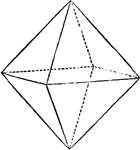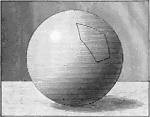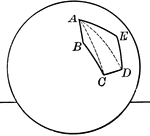
Man in Hat Facing Left
Tangrams, invented by the Chinese, are used to develop geometric thinking and spatial sense. Seven figures…
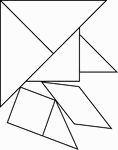
Man in Hat Facing Left
Tangrams, invented by the Chinese, are used to develop geometric thinking and spatial sense. Seven figures…
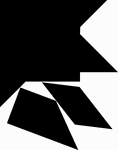
Man in Hat Facing Right
Tangrams, invented by the Chinese, are used to develop geometric thinking and spatial sense. Seven figures…

Man in Hat Facing Right
Tangrams, invented by the Chinese, are used to develop geometric thinking and spatial sense. Seven figures…

Man in Hat Facing Right
Tangrams, invented by the Chinese, are used to develop geometric thinking and spatial sense. Seven figures…

Man in Hat Facing Right
Tangrams, invented by the Chinese, are used to develop geometric thinking and spatial sense. Seven figures…
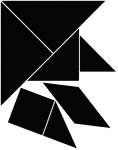
Man in Hat Facing Right
Tangrams, invented by the Chinese, are used to develop geometric thinking and spatial sense. Seven figures…
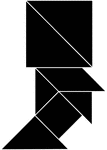
Man in Hat Facing Right
Tangrams, invented by the Chinese, are used to develop geometric thinking and spatial sense. Seven figures…

Man in Hat Facing Right
Tangrams, invented by the Chinese, are used to develop geometric thinking and spatial sense. Seven figures…
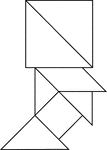
Man in Hat Facing Right
Tangrams, invented by the Chinese, are used to develop geometric thinking and spatial sense. Seven figures…

Man Walking
Tangrams, invented by the Chinese, are used to develop geometric thinking and spatial sense. Seven figures…

Man Walking
Tangrams, invented by the Chinese, are used to develop geometric thinking and spatial sense. Seven figures…

Man Walking
Tangrams, invented by the Chinese, are used to develop geometric thinking and spatial sense. Seven figures…

Man Walking
Tangrams, invented by the Chinese, are used to develop geometric thinking and spatial sense. Seven figures…
Man Wearing a Tuxedo
Tangrams, invented by the Chinese, are used to develop geometric thinking and spatial sense. Seven figures…
Man Wearing a Tuxedo
Tangrams, invented by the Chinese, are used to develop geometric thinking and spatial sense. Seven figures…
Man Wearing a Tuxedo
Tangrams, invented by the Chinese, are used to develop geometric thinking and spatial sense. Seven figures…
Man Wearing a Tuxedo
Tangrams, invented by the Chinese, are used to develop geometric thinking and spatial sense. Seven figures…

Medium House
Tangrams, invented by the Chinese, are used to develop geometric thinking and spatial sense. Seven figures…
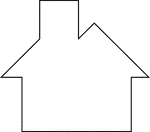
Medium House
Tangrams, invented by the Chinese, are used to develop geometric thinking and spatial sense. Seven figures…
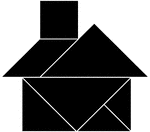
Medium House
Tangrams, invented by the Chinese, are used to develop geometric thinking and spatial sense. Seven figures…
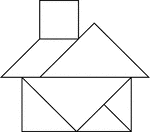
Medium House
Tangrams, invented by the Chinese, are used to develop geometric thinking and spatial sense. Seven figures…

Mocking Bird
Tangrams, invented by the Chinese, are used to develop geometric thinking and spatial sense. Seven figures…
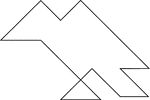
Mocking Bird
Tangrams, invented by the Chinese, are used to develop geometric thinking and spatial sense. Seven figures…
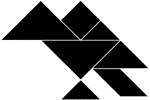
Mocking Bird
Tangrams, invented by the Chinese, are used to develop geometric thinking and spatial sense. Seven figures…
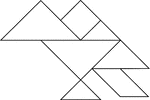
Mocking Bird
Tangrams, invented by the Chinese, are used to develop geometric thinking and spatial sense. Seven figures…

Mountain
Tangrams, invented by the Chinese, are used to develop geometric thinking and spatial sense. Seven figures…

Mountain
Tangrams, invented by the Chinese, are used to develop geometric thinking and spatial sense. Seven figures…

Mountain
Tangrams, invented by the Chinese, are used to develop geometric thinking and spatial sense. Seven figures…

Mountain
Tangrams, invented by the Chinese, are used to develop geometric thinking and spatial sense. Seven figures…
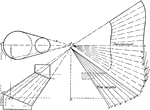
Oblique Cone by Triangulation Connecting to Two Parallel Pipes of Different Diameters
"An oblique cone connecting two parallel pipes of different diameters... the true size of the base is…
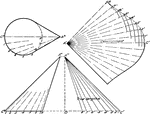
Development of Oblique Cone by Triangulation
A development or rolled out oblique cone using triangulation. The method of triangulation is done by…
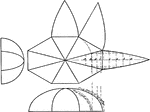
Development of Octagonal Dome
A stretched out image of the octagonal dome by using projection or with dividers to create a five-piece…

Pattern for Octahedron
Pattern that can be cut out and folded to construct a regular octahedron. Fold on the dotted lines,…

Palm Tree
Tangrams, invented by the Chinese, are used to develop geometric thinking and spatial sense. Seven figures…

Palm Tree
Tangrams, invented by the Chinese, are used to develop geometric thinking and spatial sense. Seven figures…

Palm Tree
Tangrams, invented by the Chinese, are used to develop geometric thinking and spatial sense. Seven figures…

Palm Tree
Tangrams, invented by the Chinese, are used to develop geometric thinking and spatial sense. Seven figures…

Parallelogram
Tangrams, invented by the Chinese, are used to develop geometric thinking and spatial sense. Seven figures…

Parallelogram
Tangrams, invented by the Chinese, are used to develop geometric thinking and spatial sense. Seven figures…

Parallelogram
Tangrams, invented by the Chinese, are used to develop geometric thinking and spatial sense. Seven figures…

Parallelogram
Tangrams, invented by the Chinese, are used to develop geometric thinking and spatial sense. Seven figures…
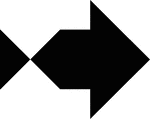
Parrot Fish
Tangrams, invented by the Chinese, are used to develop geometric thinking and spatial sense. Seven figures…
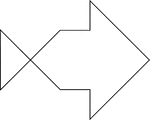
Parrot Fish
Tangrams, invented by the Chinese, are used to develop geometric thinking and spatial sense. Seven figures…
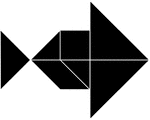
Parrot Fish
Tangrams, invented by the Chinese, are used to develop geometric thinking and spatial sense. Seven figures…

Parrot Fish
Tangrams, invented by the Chinese, are used to develop geometric thinking and spatial sense. Seven figures…
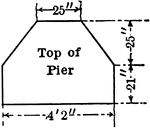
Blueprint of Pier
Blueprint of Pier/floor plan of Pier with dimensions labeled. Illustration can be used for finding are…
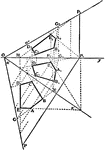
Draw Polygon
Draw the plan and elevation of a polygon of which the real shape and position in a given plane are known.
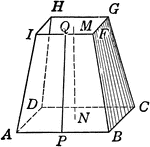
Pyramid Frustum
An illustration of a pyramid with the top cut off by a plane parallel to the base. The remaining part…
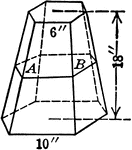
Pyramid Frustum With Hexagonal Bases and 6 inch and 10 inch Sides
An illustration of a pyramid with the top cut off by a plane parallel to the base. The remaining part…

Pyramid Frustum With Triangular Bases and Height of 27 inches
An illustration of a pyramid with the top cut off by a plane parallel to the base. The remaining part…

Pyramid Frustum With Triangular Bases and Height of 27 inches
An illustration of a pyramid with the top cut off by a plane parallel to the base. The remaining part…
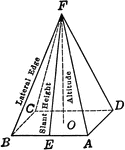
Regular Pyramid With Square Base
An illustration of a regular pyramid with a square base and labels on lateral edge, slant height, altitude,…
